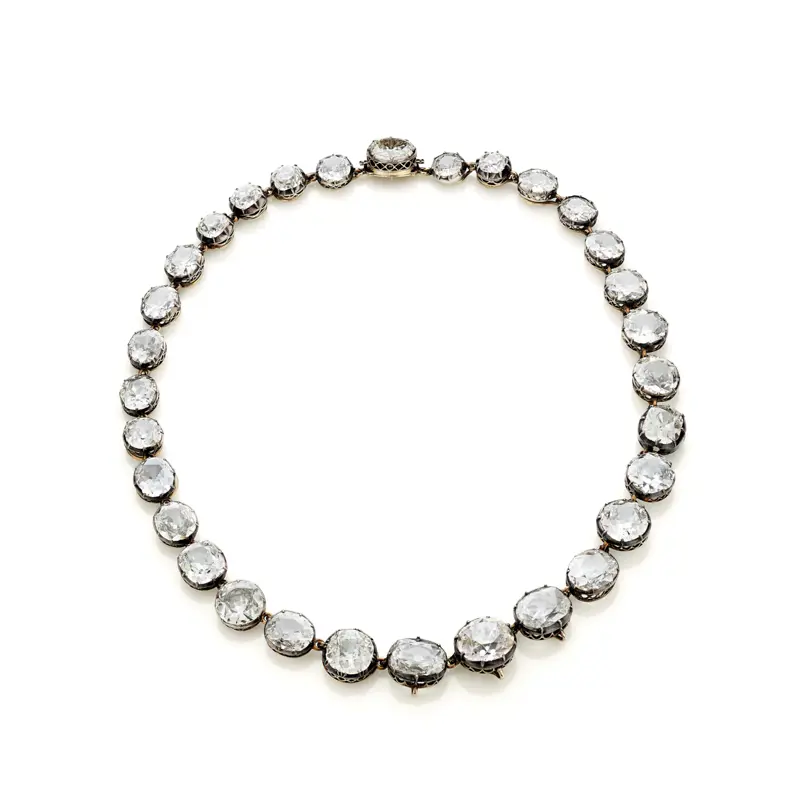
The Rivière is part of the jewellery in The Danish Royal Property Trust.
Share
This simple necklace dates from the 1700s and is referred to as the ‘Rivère’ because of its ‘river’ of 31 large diamond solitaires, which – most unusually – still sit in their original silver settings. The necklace, which Queen Lovisa brought to The Royal Danish House via her marriage with Frederik VIII, had belonged to Anne of Orange, born in 1709. Queen Lovisa inherited the necklace from her Dutch-Prussian mother as part of ‘The Dutch Collection’.
Queen Lovisa of Danmark was herself born in 1851 as the daughter of Karl XV of Sweden and his Dutch-Prussian born Queen Lovise. Through the marriage with the future Frederik VIII, Lovisa – the only living child of the Swedish King and Queen – brought along a large jewellery collection, among other things the Pearl Poire set.
Crown Princess Lovisa’s jewellery collection grew during the following ten years after the wedding due to a number of deaths among her closest relatives. In 1870, Lovisa lost her maternal grandmother, Princess Louise of The Netherlands, in 1871 her mother, Queen Louise of Sweden, in 1872 her father, Karl XV of Sweden, in 1876 her paternal grandmother, Queen Dowager Josefina of Sweden, and in 1881 her maternal grandfather, Prince Frederik of The Netherlands. Through the inheritance from the family, Crown Princess Lovisa thus became one of Europe’s wealthiest women before she turned 30 years old.
In 1952, Queen Ingrid had the necklace’s original pendant with one very large diamond in a very high setting made into a ring, for which the old setting was retained.
